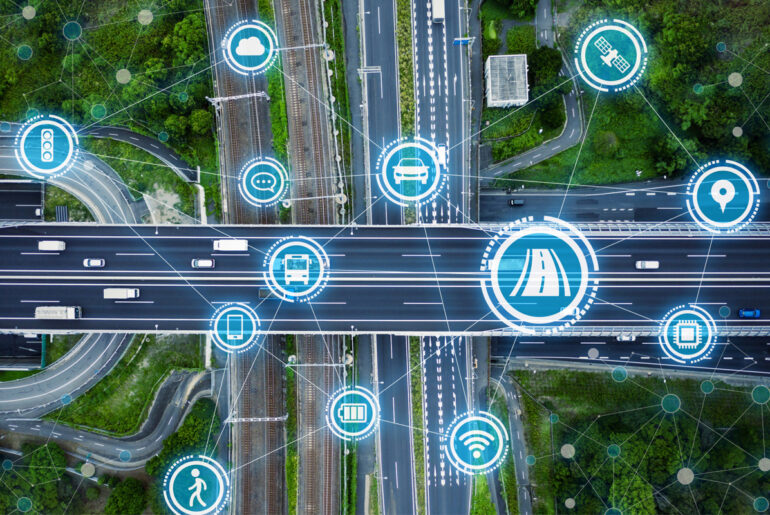Last mile delivery is a term that has been around for many years now, and its meaning may vary depending on who you ask. In its general sense, however, it involves ensuring that goods get to the final destination of the supply chain. This can be challenging as it requires drivers to make many stops and face obstacles, such as traffic jams or accidents, along the way.
Nowadays, the scope of last-mile delivery services is rapidly expanding due to more and more customers ordering items to be brought directly to their doorstep. Due to this, businesses, especially those in the e-commerce market, are choosing to hire better third-party companies that will handle this part of the process. Apart from these last-mile delivery companies, there has also been an increase in tools like delivery management apps.
This guide will break down what last-mile delivery is, how it works, its benefits, and what the trends are today. The guide also looks at the mistakes to avoid when choosing a third-party delivery service provider.
- What Is Last Mile Delivery?
- Why is last-mile delivery important?
- How Last-Mile Delivery Works
- The Future of Last-Mile Delivery Services
- How to Make Last-Mile Delivery More Efficient and Effective
- The Use of Last-Mile Delivery Software for Businesses
- Benefits of Using RouteManager
- Hiring a Third-party Company for Your Last-Mile Delivery Needs
- Common Mistakes Made When Choosing Third-Party Last-Mile Delivery Service Providers
- Challenges of Last-Mile Delivery
- Closing Thoughts
What Is Last Mile Delivery?
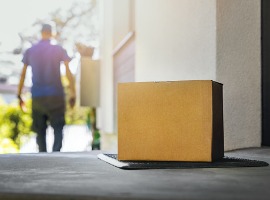
In simple terms, last-mile delivery refers to the last leg of the delivery process, which involves transporting goods from a distribution center to their destination. In other words, it is the part of the process that gets each individual package to where it needs to go. Last-mile deliveries usually happen within miles of homes, hence the name.
The complete definition, however, can be quite complex and requires the consideration of several different aspects.
Last-mile or final-mile delivery can refer to the final stretch of an item’s journey or involve multiple legs carried out along with a number of modes of transportation, such as planes, trains, and trucks. It is worth noting, though, that the bulk of last-mile deliveries happen in urban areas.
Additionally, today’s last-mile solutions can provide extra services like package sorting or order pickups at locations close by for those customers who don’t want to go through the trouble of picking up the goods themselves (e.g., grocery stores). Some of these services are usually more expensive than regular last-mile deliveries, but we must mention that this is not always the case since the service can be cheaper for large orders.
In a nutshell, last-mile delivery services are an innovative way to get goods delivered quickly and efficiently. The areas and specific types of services it covers are expanding, as businesses and consumers alike are betting on optimized deliveries as a very convenient way of selling and buying.
Why is last-mile delivery important?
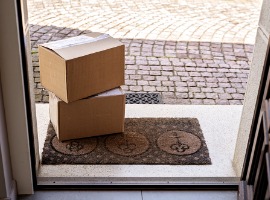
Ask yourself: What makes this step of the process important? The answer is that it can make all the difference in the delivery supply chain. One major reason that last-mile delivery services are important to businesses, especially new ones on a budget (or those who don’t have their fleet in place yet), is because they provide an inexpensive and convenient way for goods to be delivered.
Companies focus on this part of the process because optimizing it ensures that customers get their items with the least effort possible.
Other benefits of last-mile delivery include the following:
- It can help build customer loyalty, as it makes it possible for customers to get what they want and when they want it.
- It offers convenience by either delivering to the customer’s home (or office, etc.) or ordering pickups at convenient locations. These flexible delivery options help save time and money.
- Last-mile delivery may be necessary for particular items, such as food or ice cream, that must remain at a certain temperature. This last-mile service delivery ensures you get what you ordered without it being spoiled by heat or time through faster deliveries.
- Good management and tracking give the customer options such as same-day delivery.
- It allows the customer to communicate special requirements or specifications for either the products they are ordering or the delivery. This includes, for example, letting the business know what time is more convenient for receiving the goods and ensuring timely deliveries.
How Last-Mile Delivery Works
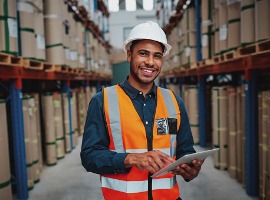
In essence, this service takes care of the delivery from the item’s location—usually a store or distribution center—to the requested destination. The nature of the service and the logistics vary. Here are some examples:
- Traditional last-mile deliveries that use trucks or vans for items like food
- One-stop shops where you can order online with pickup at the store or storage space if needed
- Doorstep service for packages, similar to traditional mail
The steps involved in last-mile delivery, from the viewpoint of the consumer, include:
- Ordering last-mile delivery through the website or app of choice
- Delivery is scheduled and typically completed within a few hours, depending on your location. Once an order has been created, you will receive notifications, either text or email, when it’s time for the last-mile delivery to be delivered.
The Future of Last-Mile Delivery Services
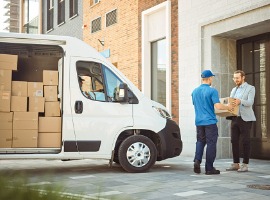
The future of last-mile delivery looks bright. The fact that the deliveries are so cheap and quick makes them more popular than ever before. Especially in the age where everything needs to be delivered right away, or it’s no good.
On-demand delivery with fast delivery turnaround times is becoming even more important as time goes on. And with developments like Amazon Prime Now, customers can get their packages within hours by paying a little extra for expedited shipping.
Additionally, when we look into the future, we can see that more and more people are looking for last-mile delivery services, whether it be through delivery drones, electric vehicles, or autonomous vehicles. As the world becomes increasingly urbanized, it’s becoming difficult to live without a car in areas where everything is at least 20 miles outside of town. So not only do we have short windows—sometimes hours instead of days or weeks—but also less time on our hands because we have to travel so much farther if we want products.
So what does that mean? Companies specializing in this part of the quick delivery process could get very popular in the days to come with increased customer demand. The future looks bright for logistics businesses, especially those with good connections with different online shopping sites (e.g., Amazon, Amazon Logistics, and eBay) and large warehouses near cities.
How to Make Last-Mile Delivery More Efficient and Effective
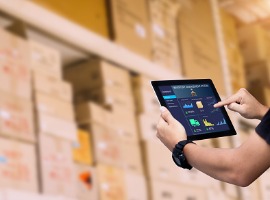
To make last-mile delivery efficient and effective, it is a matter of being organized. The following tips will come in handy in achieving this:
- Sort the packages by who they are addressed to
- Organize them into groups of ten or less
- Create a list of people for each group so you can keep track of which person is in what area
- Place together items that may be needed at certain points during delivery (e.g., tape, scissors) and place them where they will be easiest to get on either side of the driver’s seatbelt buckle.
- Keep frequently used items within easy reach from both sides and backseat storage areas.
- Get organized before departing with all deliveries made for that day. That involves keeping an accurate inventory tally, including missing orders, bad weather delays, etc.
- Keep your customer base informed about which days you will not deliver the goods. That helps to build trust and enhance the customer experience.
Start Using RouteManager!
The Use of Last-Mile Delivery Software for Businesses
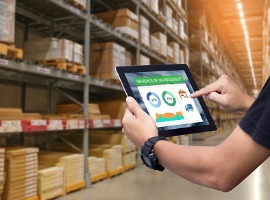
One of the most common tools that businesses use to improve their delivery process is last-mile delivery software. If your company is doing last-mile delivery or last-mile courier service on its own, this route optimization software is an inexpensive, innovative solution that will allow the goods to travel smoothly and arrive at their destination in a timely manner.
Using last-mile delivery mobile apps will help you keep track of all your orders and deliveries in real-time.
Benefits of Using RouteManager
RouteManager is a delivery routing software that helps drivers and delivery businesses with last-mile logistics. Some of the key advantages of using route planning software include:
1. Advanced Route Planning: Utilizes advanced algorithms to create optimized delivery routes that take into account factors such as traffic patterns, road conditions, and customer preferences. This ensures that drivers are taking the most efficient routes possible, saving time, fuel costs, and labor costs.
2. Real-Time Tracking: By providing real-time tracking of deliveries, businesses can monitor the progress of their drivers and ensure proof of delivery and that deliveries are being made on time. This can help improve customer satisfaction and streamline operations.
3. Reporting & Analytics: Offers comprehensive reporting and analytics tools that allow businesses to analyze delivery performance, track key metrics such as delivery times and fuel consumption, and identify areas for improvement. This data-driven approach can help businesses make informed decisions to optimize their delivery operations.
4. Integration with Existing Systems: Easily integrate with existing systems such as GPS devices, fleet management software, and customer relationship management (CRM) systems. This seamless integration streamlines the delivery process and ensures that all data is centralized and accessible in one place when planning routes.
Hiring a Third-party Company for Your Last-Mile Delivery Needs

Third-party last-mile delivery companies have been around for as long as last-mile delivery itself has been in existence. They help manage the last leg of your supply chain management tasks, which involves loading and unloading operations at distribution centers and providing transportation for goods to their final delivery destination.
Third-party last-mile delivery services may not exist in every region, but one likely exists near you based on where your business is located. This option is one many businesses are going for today and one you should consider too.
Let’s look at the advantages that come with using third-party companies for your last-mile delivery solutions.
- They handle last-mile transportation for you, so there is no need to worry about problems such as traffic that can delay your goods from reaching the customer on time. In addition, there is no need for you as a business owner to get involved with all these deliveries, which will save time. All you have to worry about is sending them an order once it’s been processed by your warehouse.
- These firms have the right equipment to transport and handle each type of product.
- If you have any last-minute changes in orders that need to be delivered to customers quickly, these services will accommodate this change with minimal delays, simply because they are used to having to do this.
- As they manage only one step of the last-mile delivery process, they can focus their resources on optimizing this step. Comparatively, a business that has to manage many different areas of service will need to distribute resources, which may result in last-mile delivery not being as convenient as it could be.
- Third-party last-mile delivery service providers deliver goods within their agreed timelines without affecting quality. As with all companies, they aim to maintain a good reputation to stay in business, and as their purpose is solely the delivery of goods, you can likely rest assured that they will handle it efficiently.
Common Mistakes Made When Choosing Third-Party Last-Mile Delivery Service Providers

Your last-mile delivery will be as good as that of the service provider you have chosen for your shipping process. And while third-party last-mile delivery companies are much sought-after, people make some common mistakes when choosing these service providers. Some of these mistakes include the following:
Not Asking for the Third-Party Company’s Background History Before Hiring Them
Some third parties do not have a good reputation because they deliver late or get packages lost in transit. So, make sure you research their backgrounds and references thoroughly before deciding on which one to hire. You want someone reliable enough to ensure your package is delivered successfully without any problems whatsoever. That means getting a well-known last-mile logistics company with an impeccable record will serve better than just choosing one randomly from the internet.
Choosing the Company Based Solely On Price
While price can be a big factor, don’t make it your only priority. Ensure you know the rates, how much they charge for last-mile delivery, and any hidden fees that may come up.
Forgetting to Mention Which Day of the Week Is Best for Delivery
Saturdays can be great if you need something delivered quickly, but there might not be many third-party last-mile delivery service providers available on this day since most people do not work during weekends.
Choosing a Third-party Logistics Company with no Good Reviews
It’s always better to go with a company with positive reviews. The majority of companies have at least dozens of reviews available on the internet. Check these reviews to see what other people are saying before opting into the service.
Additionally, ensure that the company has reviews. Sometimes, we see no negative feedback and believe everything is good to go; however, we forget that this doesn’t ensure that a firm is good. If there are no reviews, the business is probably new or not very well known. Then, you will need to do further research (ask people in the industry, contact them, set up a trial period, etc.) in order to make your decision.
Choosing Third-Party Last-Mile Delivery Because of Free Shipping Offers
Some third-party companies charge you for delivering your package on top of the price they are charging you for carrying it in the first place. Others can have added taxes or fees. So, as obvious as it sounds, make sure to check what “Free” means in each case.
Forgetting to Ask About Insurance Coverage
If something happens during transfer or transport—whether there was damage or loss while in transit—some third parties will often deny responsibility, even though they were probably involved from start to finish. Your best bet is to get full liability protection instead.
Failing to Look at What Types of Services They Offer
Are you looking specifically for same-day delivery? Do they provide other third-party services like warehousing, fulfillment centers, or distribution centers? Are there additional fees associated with these services that need to be considered as well? These factors should all weigh into your decision when choosing a third-party logistics provider.
While it is relatively easy to focus on the services you want and discard the companies that do not offer them, there is another side to this. There may also be something they provide that you don’t need. These extra features may result in you paying for something that will not be useful to you.
Challenges of Last-Mile Delivery
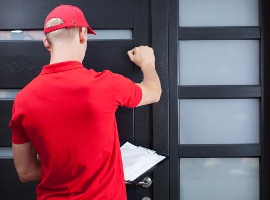
Last-mile delivery is not immune to the perils of shipment. Many challenges can make last-mile delivery a long and difficult journey. Some of these challenges include:
Unrealistic Customer Expectations
There are times when customer expectations may be at odds with the realities of last-mile logistics. For instance, customers might want their package delivered to them by noon—a feat not possible for any last-mile provider in most cases unless they have an onsite pickup location.
Customers might also expect items like wine glasses to arrive intact if shipped via road transportation. However, these fragile goods may break during shipment. Some customers may only misinterpret this to mean a letdown.
Limited Visibility
Limited visibility is yet another last-mile home delivery challenge. Not only is the delivery more difficult in remote areas, but many businesses don’t accept last-mile deliveries at all. If you’re attempting to deliver a package to the last mile, make sure your customer has the necessary contact information and agrees to be home for it. In some cases, this may mean adding an extra day of service or sending multiple drivers to ensure no one misses their delivery window.
Unoptimized Routes
If the routes the last-mile drivers take are unoptimized rather than optimized, they could waste gas, and increase shipping costs for customers, affecting customer satisfaction. Avoiding routes that are impractical, such as one-way streets or deliveries more than 30 minutes away from a customer’s location, can help keep shipping costs down for everyone involved in this kind of arrangement.
Closing Thoughts
By following the tips outlined in this guide and considering a partnership with RouteManager, you can streamline your last-mile delivery operations and provide a better experience for your customers. Remember to do your research, ask the right questions, and prioritize efficiency when choosing a third-party logistics provider for your delivery needs. thorough research, ask the right questions, and plan ahead to make the most of your last-mile delivery strategy. With the right partner like RouteManager and tools in place, you can overcome challenges and improve efficiency in your delivery operations. Book a demo today!


